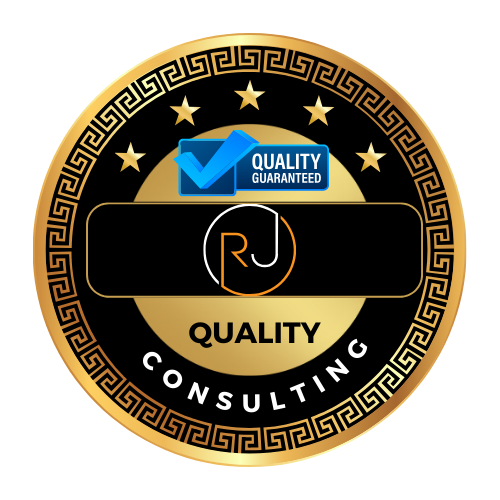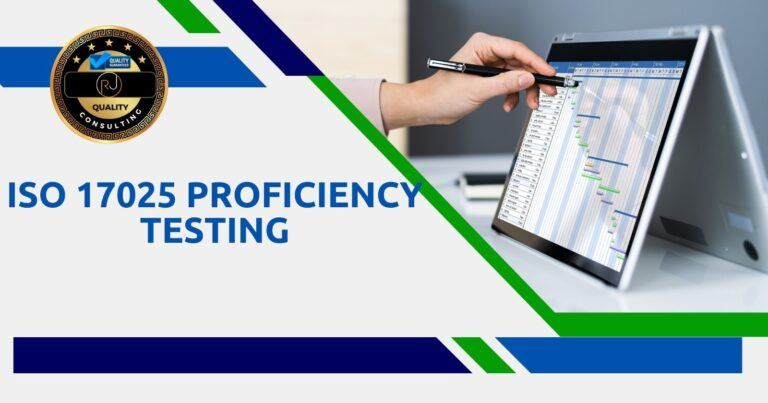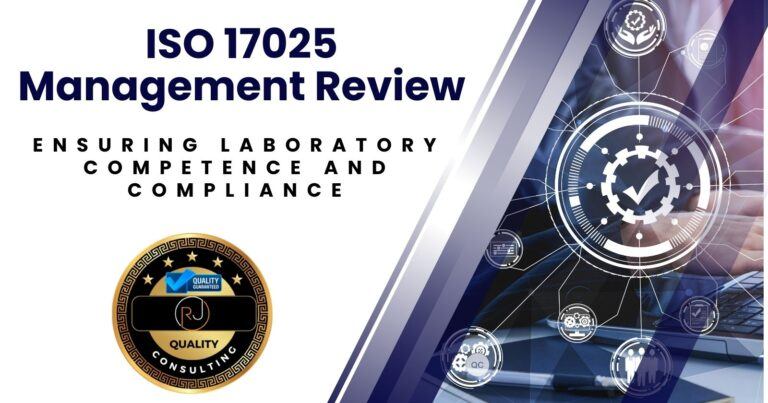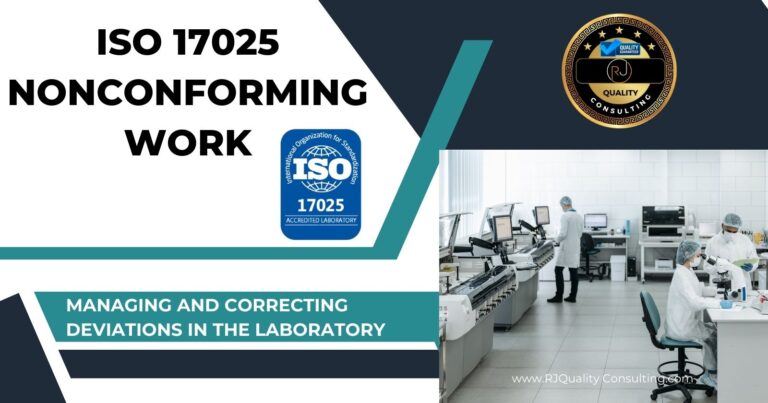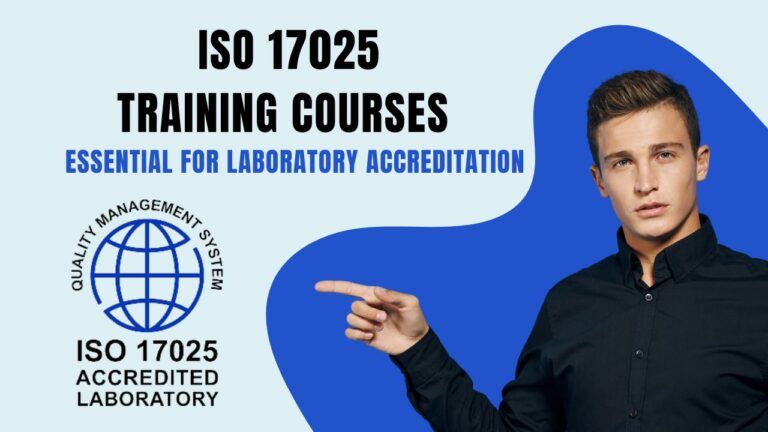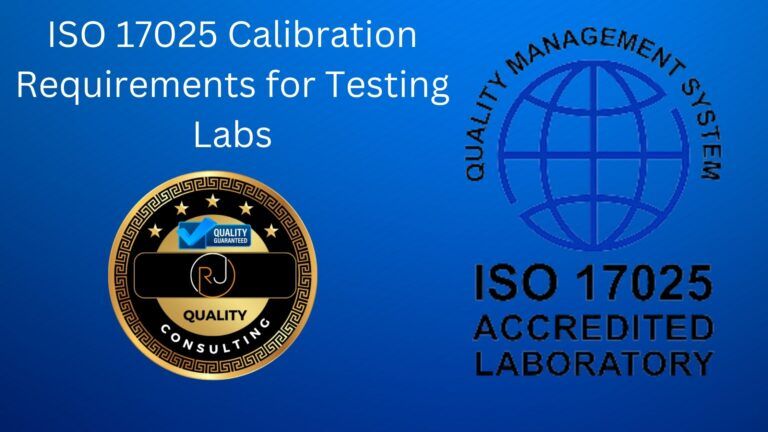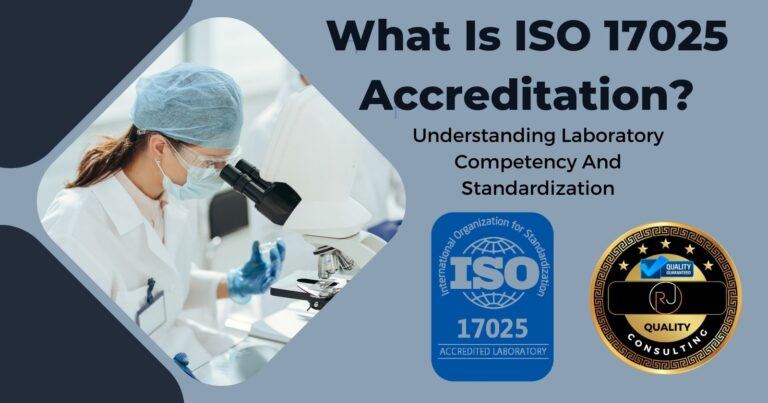ISO 17025 Clause 4 General Requirements: Impartiality and Confidentiality Explained for Laboratory Compliance
Laboratories have to meet strict standards if they want their results to be trusted. ISO 17025 Clause 4 spells out the general requirements for impartiality and confidentiality in labs, making sure testing is fair and client information stays protected. That’s a big deal for building trust between labs, customers, and outside assessors. So, what do impartiality and confidentiality actually look like in real lab work? Why do they matter so much? And how can you make sure your lab ticks all the right boxes? Getting a handle on these ideas really does make it easier to spot risks and pass those nerve-wracking assessments.
This article is part of a full ISO 17025 clause-by-clause blog post and video series where I cover all of the clause elements of the standard. This is the first of the series. Go here to read the full series on each of the ISO 17025 clauses as the pillar post. But, before you do that, be sure to watch the video below for a full step by step presentation of the ISO 17025 Clause 4, General Requirements.
📺 Watch the Video: ISO 17025 Clause 4 – General Requirements
In this video, I explain the two key components of Clause 4 — Impartiality and Confidentiality — and how they are evaluated during accreditation. I’ll also provide real-world assessor insights and examples of common audit findings related to this clause.
Key Takeaways
- Impartiality and confidentiality are non-negotiable for ISO 17025 compliance.
- Good documentation is your friend when it comes to proving you meet requirements.
- Assessors want to see strong policies and regular staff training, not just words on paper.
ISO 17025 Clause 4.1 – Impartiality

Impartiality in ISO 17025 means your laboratory’s results don’t get warped by bias or conflicts of interest. Keeping things impartial is essential if you want people to trust your test or calibration results.
📘 ISO/IEC 17025 Quality Manual Template
Accelerate your lab’s accreditation process with our comprehensive Quality Manual Template, designed to align with ISO/IEC 17025:2017 standards.
- Fully editable and customizable to fit your laboratory’s needs.
- Includes all necessary procedures, forms, and policies.
- Structured to facilitate easy implementation and compliance.
- Developed by experts with extensive ISO/IEC 17025 experience.
Definition Of Impartiality
The ISO/IEC 17025 standard defines Impartiality in the definitions section 3.1 – Impartiality is “presence of objectivity”. Then, in the same section of the standard, it has two of the following notes:
Note 1 to entry: Objectivity means that conflicts of interest do not exist or are resolved so as not to adversely influence subsequent activities of the laboratory (3.6).
Note 2 to entry: Other terms that are useful in conveying the element of impartiality include “freedom from conflict of interests”, “freedom from bias”, “lack of prejudice”, “neutrality”, “fairness”, “open-mindedness”, “evenhandedness”, “detachment”, “balance”.
Impartiality comes down to acting with objectivity and fairness—no favorites, no prejudice. In a lab, that means making sure your results don’t get twisted by any inside or outside pressure. Don’t let money, business interests, or personal stuff influence how you run or report tests. ISO 17025 wants labs to make decisions and deliver results that reflect reality—no funny business, no hidden agendas.
Your lab needs to spot and minimize risks that could mess with impartiality. Keeping things objective protects your reputation and helps clients and regulators trust you.
Importance For Test Result Integrity
If your lab’s results aren’t impartial, accuracy and reliability go out the window. Even a tiny bit of bias can throw off outcomes, which can cause real headaches for clients—and sometimes even legal trouble.
Impartiality is what keeps your test or calibration results valid. It means every decision and measurement is based on evidence and the right procedures, not outside influence. That’s what keeps your lab’s name good and your data worth trusting.
Clients and regulators depend on your results for big decisions. If you drop the ball on impartiality, you risk losing trust, business, or even your accreditation.
Examples Of Conflicts Of Interest
A conflict of interest happens when personal gain or relationships could sway your lab’s work. Some common scenarios:
- Financial interest: A staff member stands to profit if a client does well.
- Family or close connections: Someone testing samples has a relationship with the client.
- External pressures: Suppliers, management, or customers try to push for certain results.
| Scenario | Why It’s a Conflict |
|---|---|
| Lab technician owns client stock | Personal profit could shape outcomes |
| Relative asks for test favors | Personal loyalty clouds judgment |
| Management pressures for quick pass | Speed is favored over accuracy |
It’s important to recognize and handle these risks before they can do any damage.
Demonstrating Impartiality
Your lab needs policies and procedures that clearly show impartiality matters. Make sure staff know what counts as a conflict and how to speak up. Here’s what usually works:
- Regular impartiality training for everyone—not just managers.
- Getting staff to sign impartiality and conflict-of-interest declarations.
- Doing risk assessments to spot and address threats to impartiality.
- Documenting what you do when you find impartiality risks.
Section 4.1.1 requires that the laboratory is structured to safeguard impartiality. This is typically shown in the organizational chart of the company. For example, you would not want the Quality Manager reporting to the Sales department who might have a conflict of interest regarding customer information or reporting to lab operations who is interested in getting the results quickly without going through stringent quality control.
Section 4.1.2 – requires that laboratory management is committed to impartiality. This can be demonstrated by laboratory management imposing an impartiality policy to its employees and a signed agreement that the employees have read and understand that policy.
Section 4.1.3 requires that the laboratory shall not allow commercial, financial, or other pressures to compromise impartiality. It is recommended that the laboratory puts a statement like this in the policy that the employees sign.
Section 4.1.4 requires that the laboratory identifies risk to impartiality on an ongoing basis. This can be demonstrated in a variety of ways. One way is to discuss risk to impartiality during ongoing meetings, such as Management Review. Then, you would document that discussion in the Management Review Meeting Minutes. I recommend having a bullet point for this in the agenda itself.
Section 4.1.5 requires that if a risk is identified that the laboratory demonstrates how it eliminates or mitigates this risk. This can also be documented in the Management Review Meeting minutes as action items or within a risk register with assigned actions associated with the risks.
Audit these practices and keep records tidy—clients and regulators notice. Assigning impartiality roles or committees can help keep things on track. If there’s even a hint of bias, don’t sweep it under the rug—deal with it fast.
ISO 17025 Clause 4.2 – Confidentiality

ISO 17025 Clause 4.2 says you’ve got to protect all confidential information you get or create while doing lab work. If you don’t, you’re risking both your accreditation and your client’s trust. It’s crucial to know exactly what counts as confidential, who’s responsible, and how to document and talk about it the right way.
Protected Information Types
There’s a lot you need to keep under wraps in a lab. Think client data, test results, methods, business info, and even personal details about clients or staff.
Labs should protect information like:
- Client identities and contact details
- Test and calibration results
- Business trade secrets
- Technical procedures and formulas
Confidentiality even covers info you share with outside providers—unless the law says otherwise. Only release information if you’ve got written permission from the client or if it’s legally required. Know what’s confidential in your situation and keep it locked down, start to finish.
Responsibility For Confidentiality
Everyone in the lab shares responsibility for confidentiality. It’s not just on the lab manager or quality manager—anyone handling confidential info has to protect it.
Make sure everyone gets the message by including confidentiality in employment agreements and training. Don’t forget temps or contractors—they need to know the rules, too.
If someone’s unsure about what can be shared, they should know who to ask and how to report it before saying a word. If there’s a breach, have a plan for reporting and fixing it, pronto.
Documentation And Communication Best Practices
Clear, written procedures for handling confidential info aren’t optional—they’re a must. Your policies should spell out what’s confidential, who’s in charge, and how to handle disclosure requests.
Some best practices:
- Store data in secure electronic systems
- Mark documents “confidential” where it matters
- Limit access to just those who need the info for their work
- Have a confidentiality agreement with both employees and contractors
Log every time you share confidential info—who got it, why, and when. If you have to talk about sensitive stuff, do it privately. Keep reminding staff about these rules during regular training to avoid slip-ups.
Auditor Expectations for Impartiality and Confidentiality
As a certified ISO/IEC 17025 Assessor, I understand what objective evidence Assessors and Auditors are looking for when auditing Clause 4 of the standard. They want to see proof your lab protects confidential info as ISO 17025 requires. They’ll look at your impartiality and confidentiality policies, check training records, and see if you’ve got proper agreements with anyone who gets access.
They will also take a look at your Organizational Chart to see who reports to who and, especially, who the Quality Manager reports to, to see if there is a potential conflict. They’ll probably talk to staff to make sure people actually get what confidentiality means and aren’t just nodding along. Auditors also check records of info sharing—when, why, and with whom.
The auditor will also want to see objective evidence that risks to impartiality are being identified on an ongoing basis. They are used to seeing this in Management Review records and/or some type of risk register or other document. The reason Management Review is looked at in this way, is that it occurs on an ongoing basis.
Pro tip – As an experience auditor, I recommend for the lab to have a sign in sheet in the administrative office where visitors sign in and on that sign in sheet, put a confidentiality statement. This way, when they sign in, they are agreeing to the laboratory’s confidentiality policy. Section 4.2.4 requires that not only employees agree to the policy, but that personnel of external bodies also agree. A great way to document this is through the use of the laboratory’s sign in sheet. This will keep you covered.
Assessor Insights
When an assessor comes by, they’re watching how your lab actually handles impartiality and confidentiality—not just what’s on paper. They want proof your team knows the rules and follows them.
Common Documents Assessors Review:
- Impartiality and confidentiality policy
- Training records
- Risk registry for impartiality risks
- Management review meeting minutes
Assessors will talk to staff at every level, not just managers. Everyone should be able to explain how they avoid conflicts of interest and protect client info.
Here’s a handy table for what assessors usually check:
| What Assessors Check | Example Evidence |
|---|---|
| Policies in place | Written procedures or policies |
| Staff awareness | Training attendance records |
| Risk identification | Completed risk register |
| Information protection | Access controls, signed agreements |
| Evidence of Management Review Meeting | Management Review Meeting Minutes |
If you use outside providers, assessors might ask how you make sure those folks keep client data safe and don’t introduce bias.
Best bet? Regularly review your policies and keep your evidence up to date. Even little things—like missing signatures or old documents—can trip you up during an assessment.
Foster a culture where people feel comfortable raising impartiality or confidentiality concerns. Assessors notice if your team handles issues honestly and quickly, and that can make all the difference.
Documentation Tips
Need Fully-Compliant ISO/IEC 17025 Procedures?
Our ISO/IEC 17025 Procedures Template Package includes all required policies and procedures to meet the standard—especially key documentation required for Clause 4 (Impartiality & Confidentiality). Designed by a certified assessor to help labs meet every requirement with confidence.
Get the ISO/IEC 17025 Procedures Now →Clear, organized documentation makes it so much easier to meet ISO 17025 Clause 4 requirements around impartiality and confidentiality. Here are a few practical tips to help your lab actually stay compliant (and keep your sanity):
- Keep records simple: Stick to forms that are easy to read, and skip the jargon when you can.
- Update regularly: Whenever policies or people change, update your docs. Don’t wait for an audit to catch up.
- Access control: Decide who really needs to see or edit sensitive stuff, and lock down the rest.
Show clearly how you spot and assess risks to impartiality. A straightforward table works well, like this:
| Risk Identified | Action Taken | Person Responsible |
|---|---|---|
| Family member as client | Assign alternate staff | Lab Manager |
List out the ways your lab protects client data. For example:
- Password-protected files
- Locked filing cabinets
- Staff sign confidentiality agreements
Keep a log whenever you share client info—note who got it and why. This demonstrates you take confidentiality seriously, not just in theory.
Review your records every so often to make sure they’re up to date and nothing’s missing. Don’t just wait for an audit; fix things as soon as you spot a change in process or policy.
Organize your training logs, too. A simple checklist showing which staff completed impartiality and confidentiality training is usually enough.
If you use templates, make them clear and quick to fill out. That way, staff can document issues without getting bogged down in paperwork.
Consistent documentation makes it way easier to show compliance when auditors come knocking.
Next Steps in Meeting ISO 17025 Clause 4
Now’s the time to make sure your lab’s on track with the impartiality and confidentiality standards in ISO 17025 Clause 4.
Review your current policies:
Take a look at your lab’s procedures and records. Are there clear steps for avoiding conflicts of interest and keeping data safe? If not, time for a tune-up.
Get your team involved:
Train your staff about why impartiality and confidentiality matter. Use real examples—nobody remembers a boring slideshow, right?
Keep lines of communication open. Encourage everyone to speak up if they spot a risk or a possible breach, and make sure they know it’s safe to do so.
Quick checklist for next steps:
| Task | Responsible Person | Due Date |
|---|---|---|
| Review impartiality policy | Lab Manager | [Insert Date] |
| Update confidentiality agreements | HR | [Insert Date] |
| Staff training session | QA Lead | [Insert Date] |
| Risk assessment review | Compliance Officer | [Insert Date] |
Tip:
Write down every action you take. Good records aren’t just for show—they prove you’re serious about ISO 17025.
Hold everyone accountable. Make impartiality and confidentiality part of your lab’s daily routine, not just a box to check.
Start now—your clients will notice, and you’ll build real trust over time.
Frequently Asked Questions
ISO 17025 clause 4 covers impartiality and confidentiality in lab work. You need clear processes to avoid bias and protect private info.
What does ISO 17025 require for maintaining impartiality in laboratory activities?
Make sure conflicts of interest never affect your results. The standard says your lab needs to stay free from bias—real or perceived—throughout all activities. You should also check and address impartiality risks on a regular basis.
How does ISO 17025 clause 4 ensure confidentiality in lab operations?
Keep all customer data and lab results locked down. Only share confidential info if the law says you have to, or if the customer gives written permission. Limit who can access data, and have staff sign confidentiality agreements to help keep things secure.
In what ways must a laboratory demonstrate its commitment to impartiality as per ISO 17025?
Write out your impartiality policies. Show your commitment with regular risk assessments, train your people, and act fast if you spot a risk. Document your procedures and keep evidence handy for audits.
Can you outline the main points of the confidentiality agreement required by ISO 17025?
The agreement should make it clear: staff can’t share confidential client info with anyone not authorized. It needs to cover all data, reports, communications, and findings. Employees should know what happens if they break the rules.
What are the potential risks to impartiality in a laboratory setting and how should they be assessed under ISO 17025?
Risks might include personal relationships, financial interests, or pressure from clients. Identify, review, and minimize these risks with regular assessments and solid controls. Keep written records of your risk assessments—don’t rely on memory.
How is the importance of impartiality and confidentiality reflected in a laboratory’s results according to ISO 17025?
When you put real safeguards in place, your lab’s results actually stay trustworthy and credible. Clients and regulators end up relying on your outcomes because you actively manage risks to impartiality and keep sensitive data under wraps. That’s what really builds confidence in your lab’s work, isn’t it?
Conclusion & Next Steps
Mastering Clause 4 is fundamental for any lab pursuing or maintaining ISO 17025 accreditation. By fostering a culture of impartiality and rigorously protecting confidential information, you not only comply with the standard – you also build trust with customers and stakeholders. Lab managers and quality officers should lead by example: discuss impartiality openly, celebrate team members who speak up about potential biases, and constantly reinforce the message that integrity comes first. Likewise, make confidentiality a point of pride in your lab – let clients know you have rock-solid controls on their data, and follow through on that promise every day.
As you refine your systems, remember that documentation and training are your allies. Keep records of everything, and ensure everyone on the team understands why these issues matter. An impartial and confidential operation isn’t just about avoiding non-conformities – it’s about running a lab that people can rely on with their products, research, or samples.
Before we wrap up, here’s a quick call-to-action for you: if you need a boost in developing your ISO 17025 system, check out our ISO 17025 Implementation Templates – a comprehensive bundle of quality manual, procedures, and forms that cover all clauses (including Clause 4) in a ready-to-use format. They’re available here and can save you tons of time. Many labs have used these to fast-track their accreditation process.
Additionally, if you’d like personalized guidance, I’m offering a free 45-minute consultation to discuss your lab’s specific challenges and questions (no strings attached). Sometimes a short conversation can clarify weeks of uncertainty. You can book your free consult through this link: Schedule a 45-min Consultation. Let’s talk through any hurdles you face with impartiality, confidentiality, or any other ISO 17025 clause – I’m here to help you succeed.
By strengthening your lab’s approach to Clause 4 now, you lay a strong foundation for all the other requirements to come. Here’s to running a lab that’s not only competent but also unquestionably fair and trustworthy. Good luck on your ISO 17025 journey!
Also Explore
| Clause | Topic | Link |
|---|---|---|
| Clause 5 | Structural Requirements | ISO 17025 Clause 5 |
| Clause 6 | Resource Requirements | ISO 17025 Clause 6 |
| Clauses 6 and 7 | Bonus Video Blog | ISO 17025 Clauses 6 and 7 |
| Clause 7 | Process Requirements | Read Article |
| Clause 8 | Management System Requirements | Read Article |
🕒 Book Your Free 45-Minute Consultation
Have questions about ISO/IEC 17025 or ISO 9001 implementation or accreditation? Schedule a free 45-minute consultation with me to discuss your Company or laboratory’s needs and how we can achieve compliance together.
Schedule Your Consultation